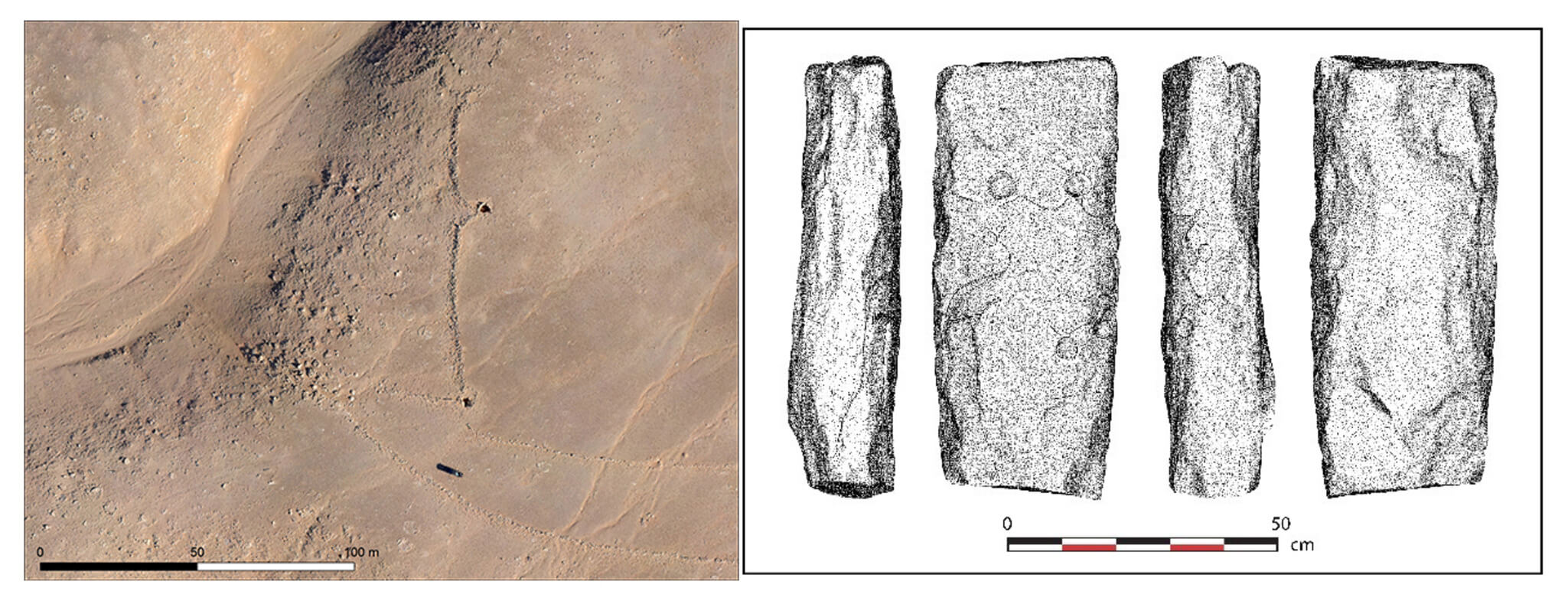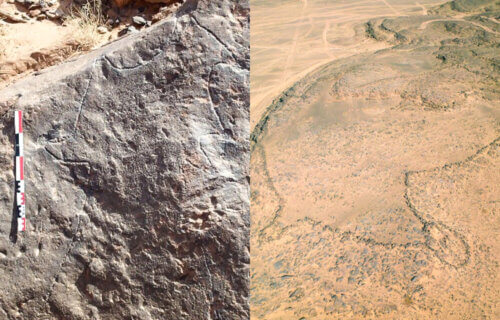PARIS — Archaeologists have uncovered the earliest known architectural plans to scale, dating back thousands of years. The engravings, which are estimated to be between 8,000 and 9,000 years old, depict desert kites—large structures built to trap animals.
According to researchers, the ability to represent expansive space on a small, two-dimensional surface marks a significant point in the evolution of intelligent behavior, enhancing our understanding of how these kites were designed and constructed.
“Even though human constructions have been altering natural landscapes for millennia, few plans or maps predate the literate civilizations of Mesopotamia and Ancient Egypt. These findings represent the oldest known scale plans in human history,” says Dr. Rémy Crassard from the Centre National de la Recherche Scientifique (CNRS) in France, in a media release.
The international team, which included scientists from France, Israel, Germany, Saudi Arabia, and Jordan, noted that desert kites were first discovered by aerial reconnaissance in the 1920s.

“The engravings illustrate desert kites—sophisticated archaeological structures composed of walls that are up to five kilometers long converging in an enclosure to trap animals. These structures, bordered by pits, can only be fully seen from the air. The necessity for this type of spatial representation was unprecedented,” explains Dr. Crassard.
The researchers discovered two engravings representing kites in Jordan and Saudi Arabia. In the Jibal al-Khasabiyeh area of Jordan, which is home to eight kites, a carved stone depiction was found nearby and has been dated to around 7,000 years ago. In Saudi Arabia’s Zebel az-Zilliyat area, where two pairs of visible kites are located 3.5 kilometers apart, a to-scale engraving was discovered and dated to around 8,000 years ago.
“These kinds of plans would have been essential to the builders, as the complete layout of the structures cannot be comprehended without an aerial view,” says Dr. Crassard. “Previous evidence for the plans of large structures were rough representations, but these designs are extremely precise.”
The findings are published in the journal PLOS One.
South West News Service writer Stephen Beech contributed to this report.

MORE BS. Probably someone is trying to sell his book. Man’s RECORDED history, history that is written down and dated is about 6,000 years. Kinda hard for any construction plan to pre-date man’s recorded history by 3,000 years.
Are you stupid or just high?
I’ll answer for him, he’s just stupid.
While his statement is a bit inelegant, accurate dating of things like rock carvings is difficult, and mostly just speculation.
The rock doesn’t give the answer, so you would look to the trap itself. If any of the wood used in the structure remained, you could try carbon dating it.
While carbon dating is not particularly accurate, other methods are less so.
100% people can not conceive that history doesn’t go further than 4000 bc. The trapped in the Darwinian dogma, if you say anything outside of it you are to be burnt at the stake
The Sphynx dates itself: the Head is a woman and the body is a Lion. It points to the zodiac in its orientation to the east and the rising of Orion. In the Zodiac, the only female is Virgo, and Virgo and Leo are right next to each other. This is telling the incredibly arrogant but incredibly stupid of today that the Sphynx was built approximately 11,500 years ago. And, just as a reminder, the earth is far older than 6000 years, and that a LOT of Genesis was deliberately left out (See what Jesus has to say about that in the NT), so the timeline from Adam is a LOT longer than most people think.
True enough if the association of the sphinx with the modern zodiac is precisely as you say it is.
But it probably isn’t.
How do you know that your anthropology is correct
Did they uncover any votes for Biden at the site?
“evolution of intelligent behavior”? So the authors think that we were no created intelligent? Then how did we survive this long? Godless dopes.
“evolution of intelligent behavior”? So the authors think that we were not created intelligent? Then how did we survive this long? Godless dopes.
Exactly how would one know when the “plan” was made in relation to the actual construction? Perhaps the “plan” was merely an observer duplicating the construction.
Seems much more likely that the engraving was made AFTER the trap was constructed, which would give the engraver a “precise” model to follow.
It seems much more likely that the rock engraving was made AFTER the trap was constructed, which would give the engraver a “precise” model to follow.
Only if the person making the scale drawing had an airplane…
I wouldn’t have written “evolution of intelligent behavior” but instead an “invention of a methodology, process or tool.” The writer is locked into thinking that prehistoric man at this late date is still evolving from an ape, where IMHO he’s fully evolved and now is accumulating knowledge and mastery of his environment. Would one describe the formulation of the scientific method many millenia later and not many centuries ago a step in the “evolution of intelligent behavior?”
500K years into the future humans (if they are still around) will probably look back at the bits of our civilization left after we are done destroying the planet, and think of us as dumb and unintelligent “prehistoric” humans too. It’s all relative.
I hope they got a permit!